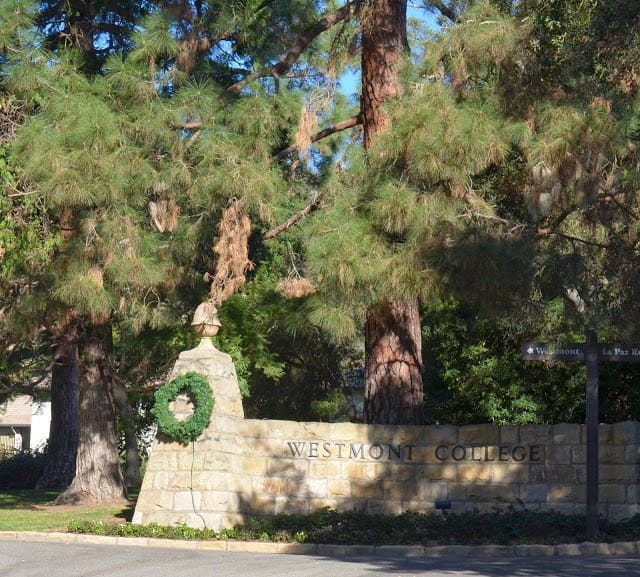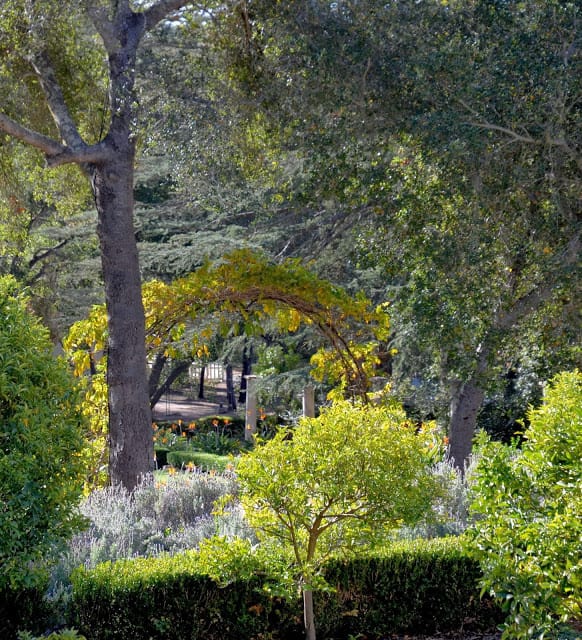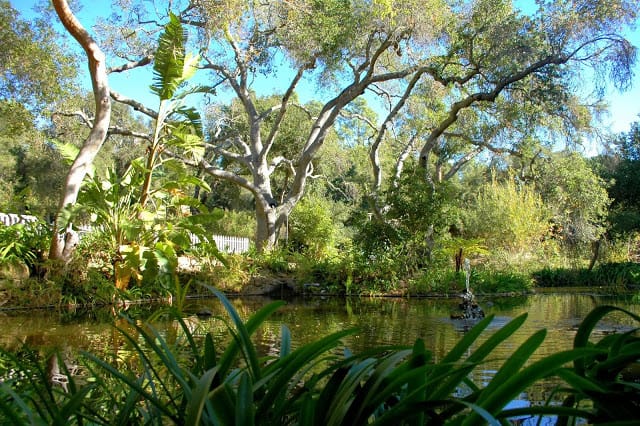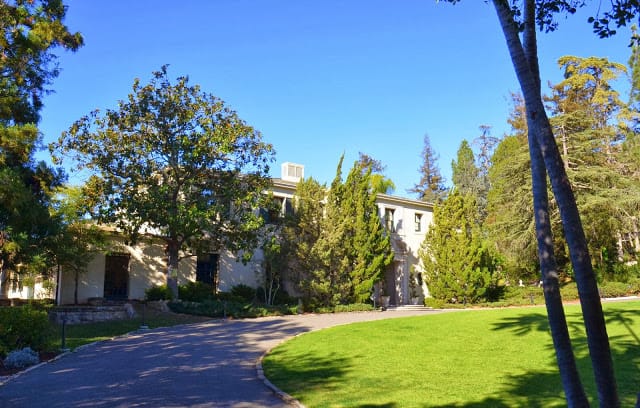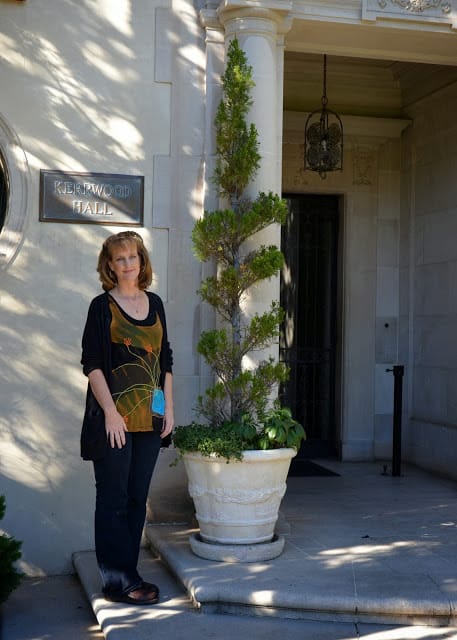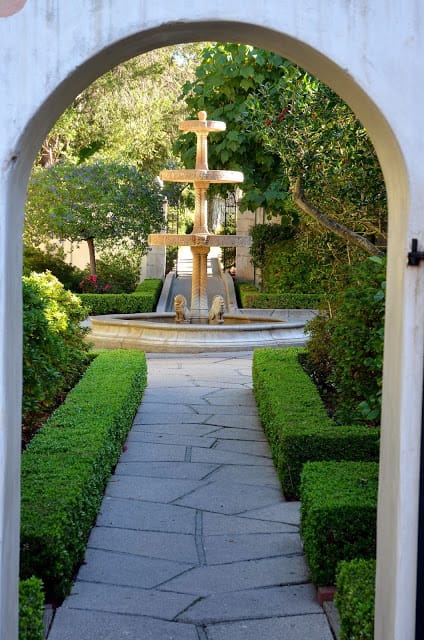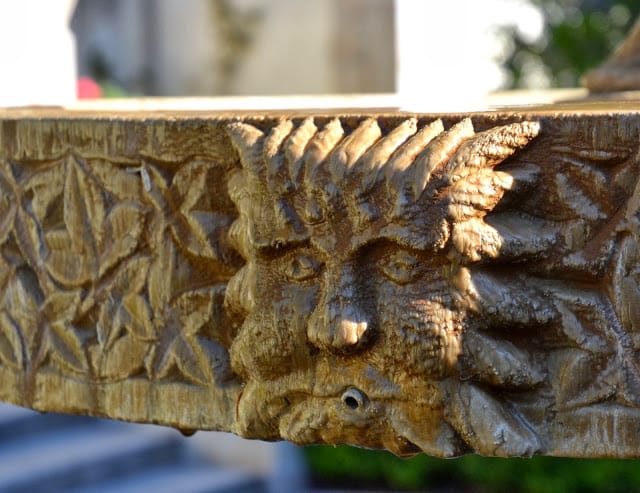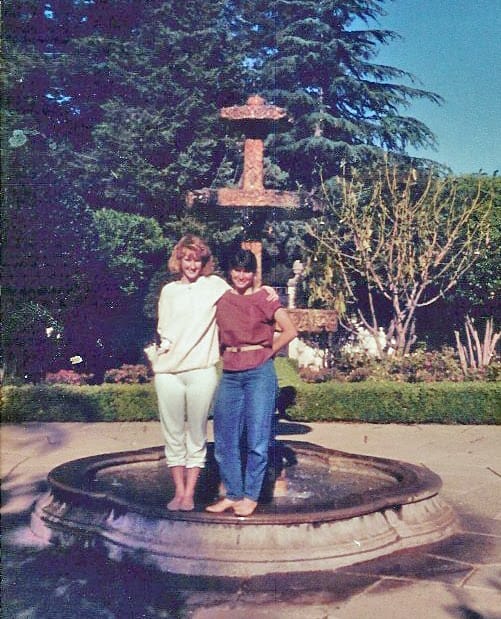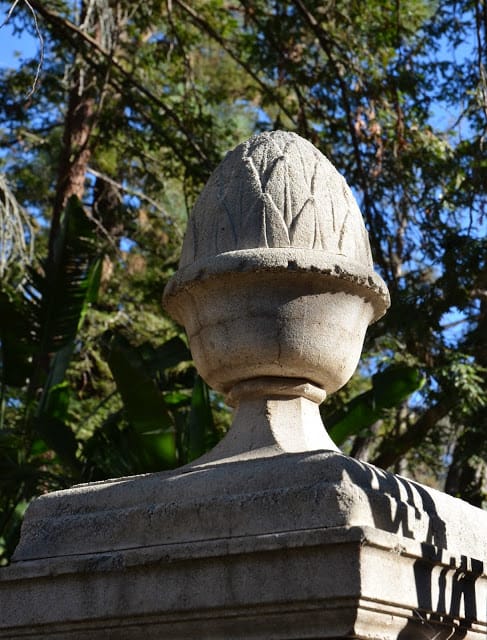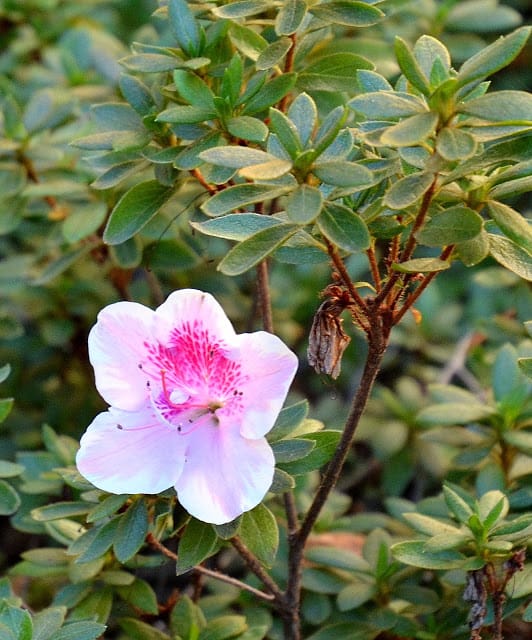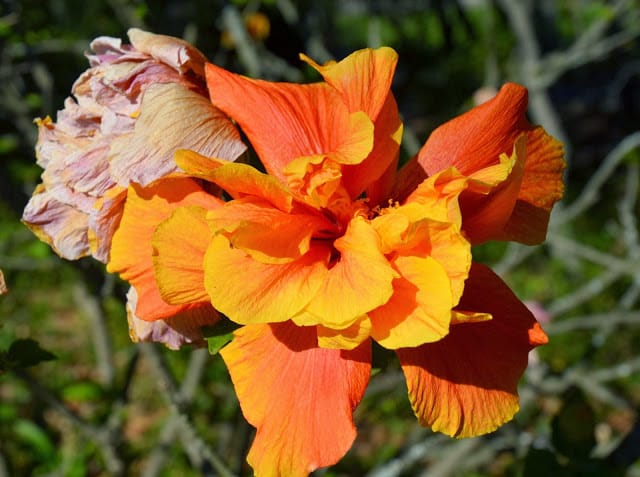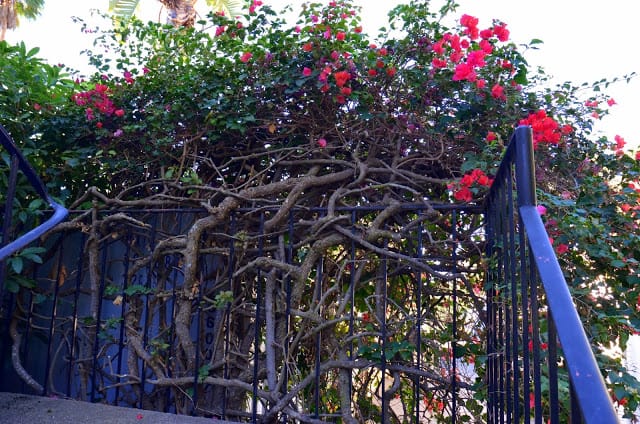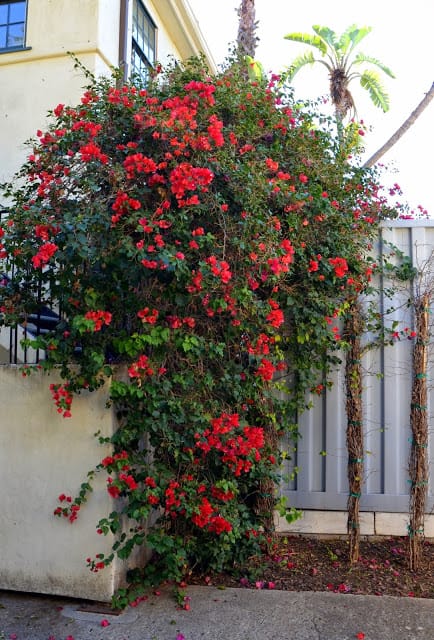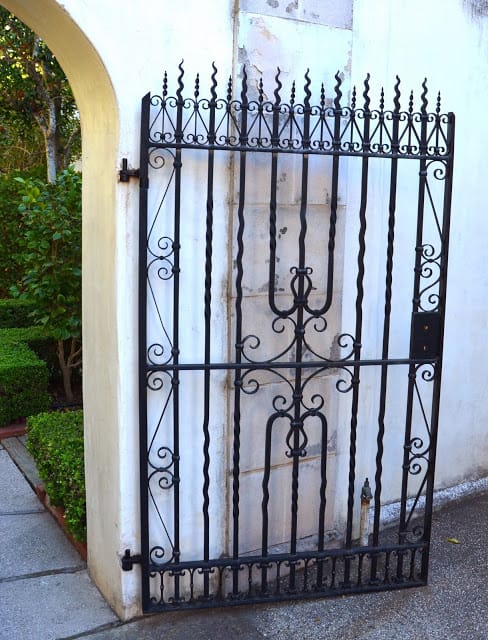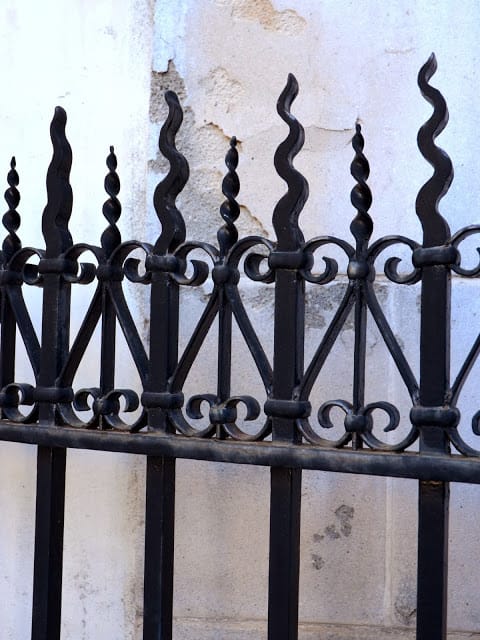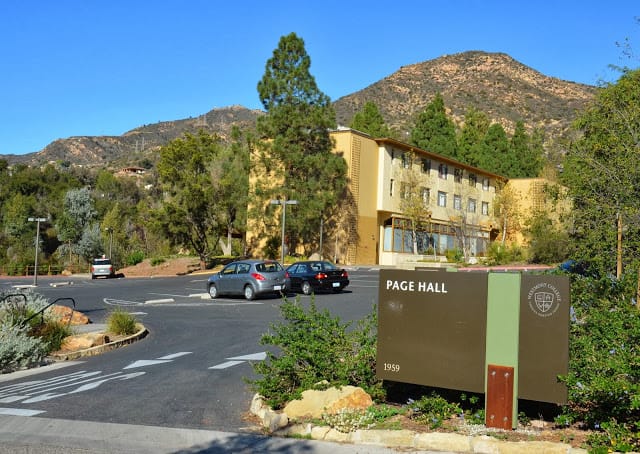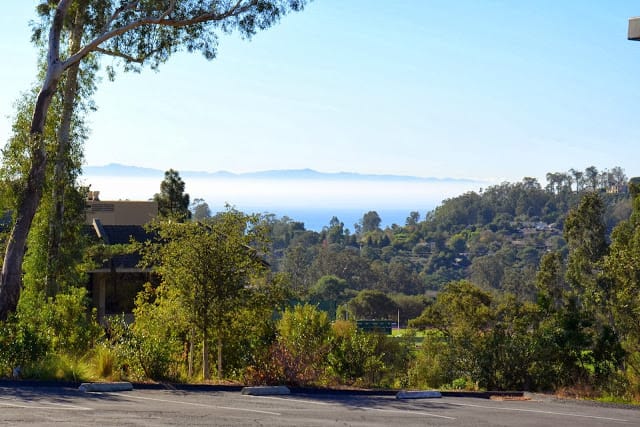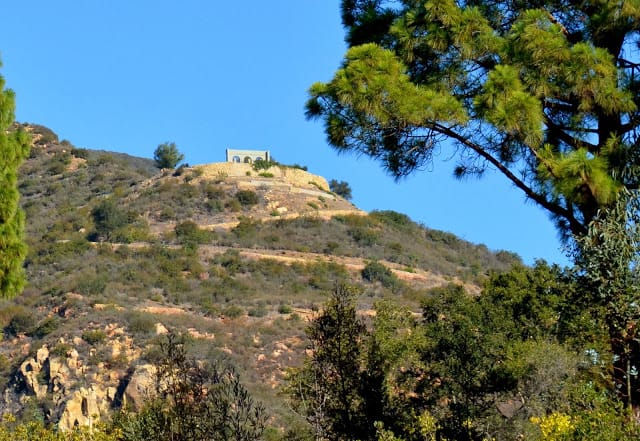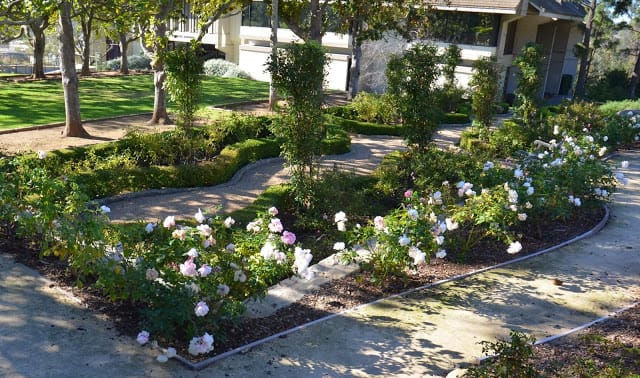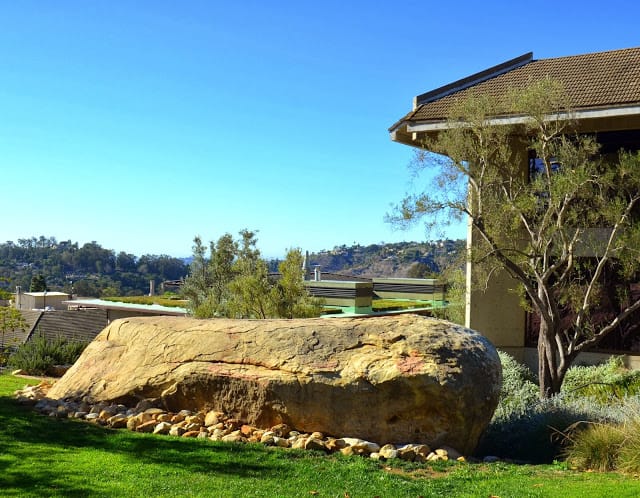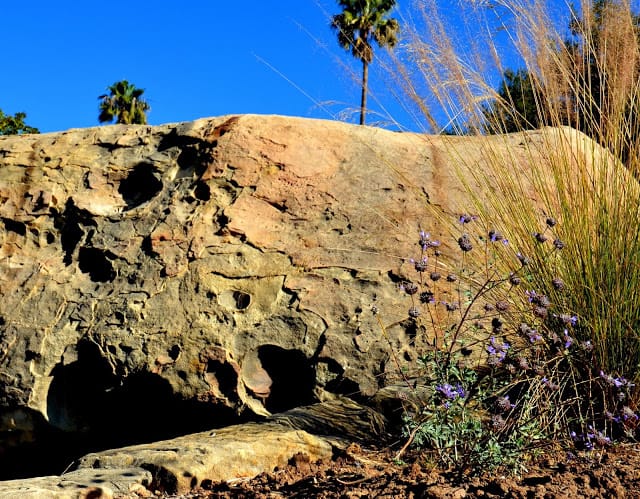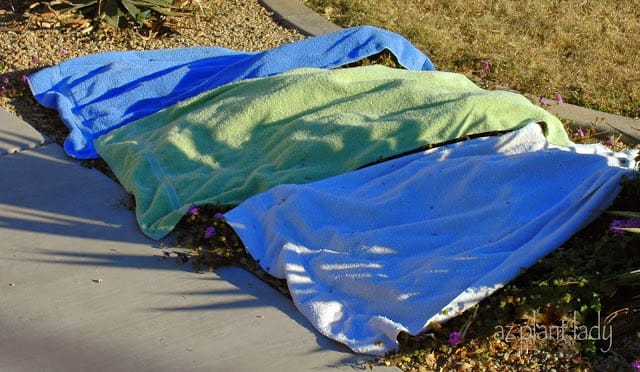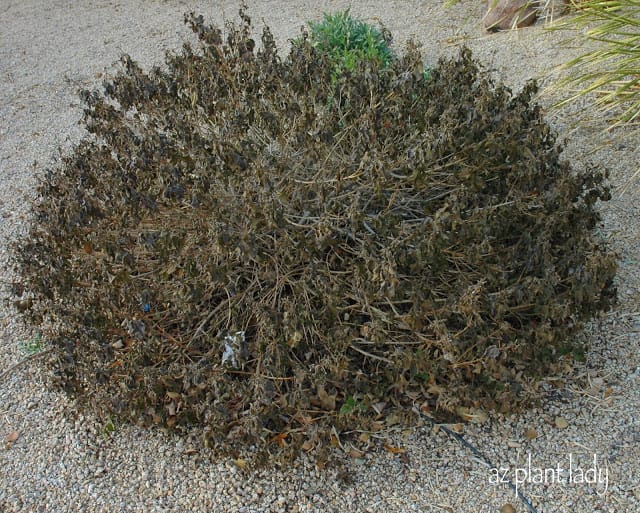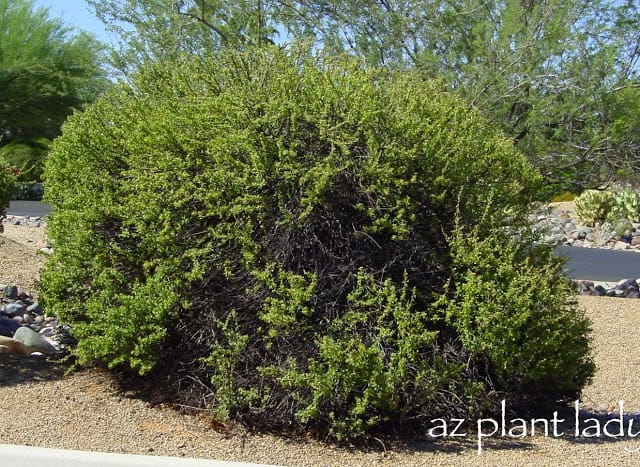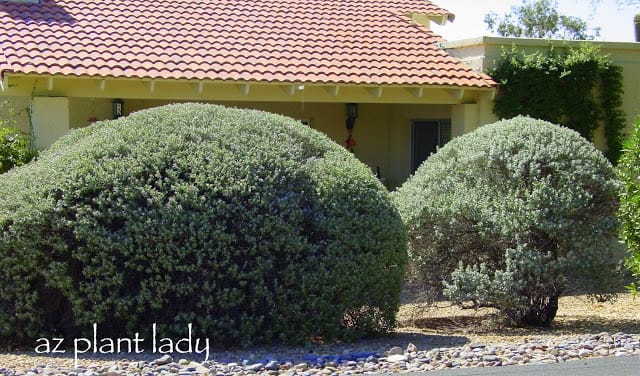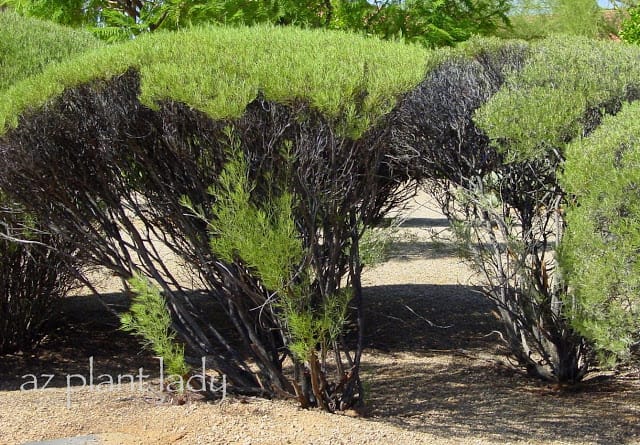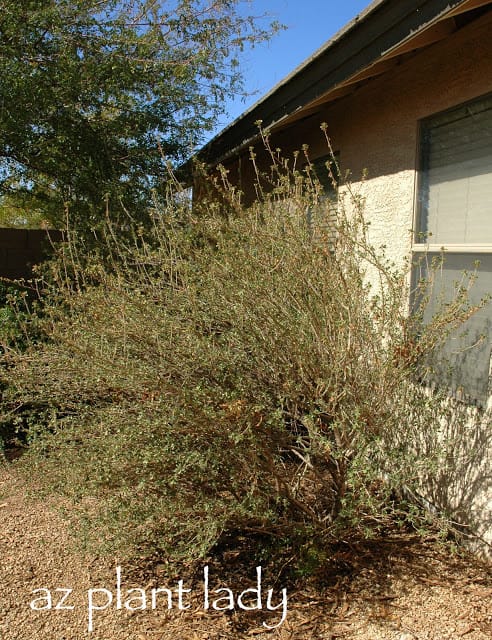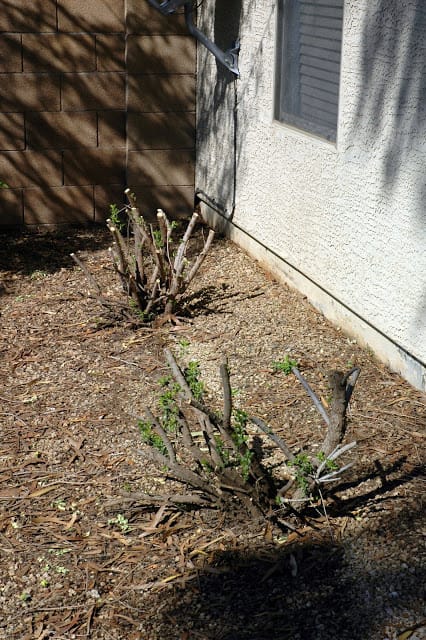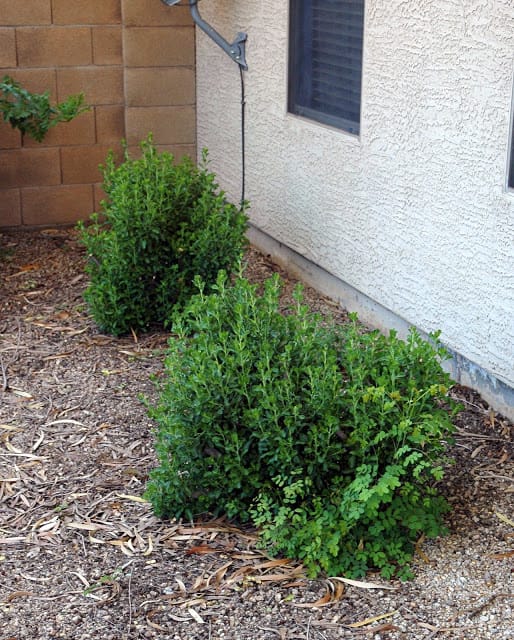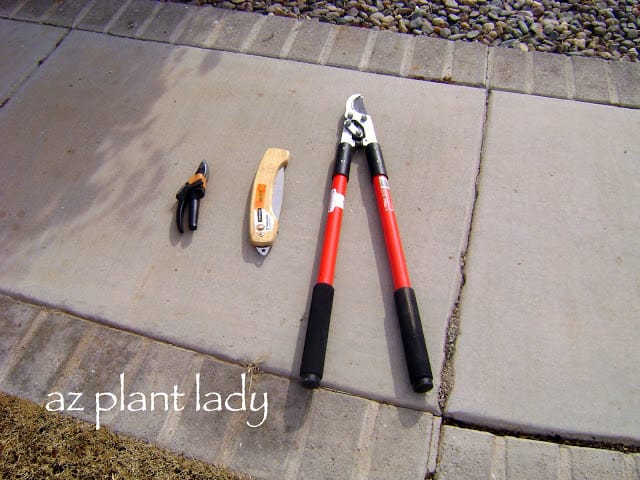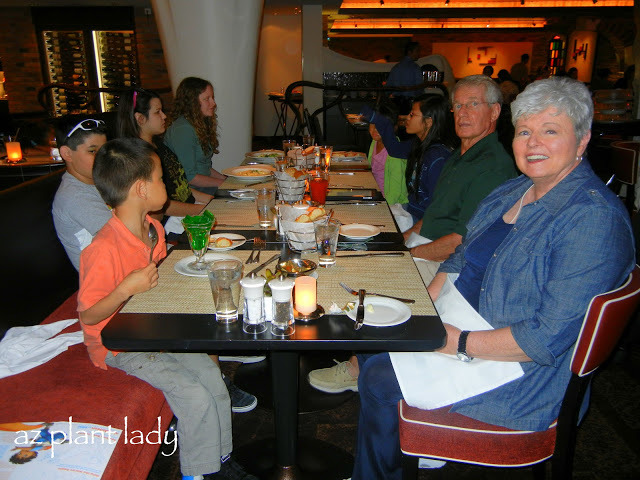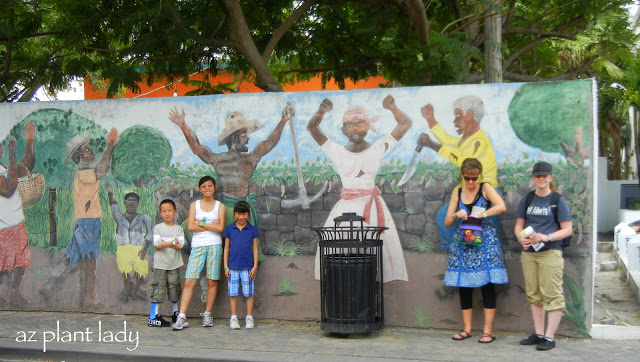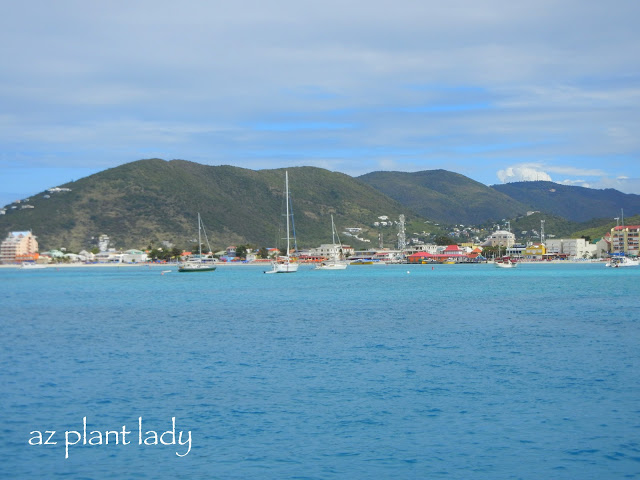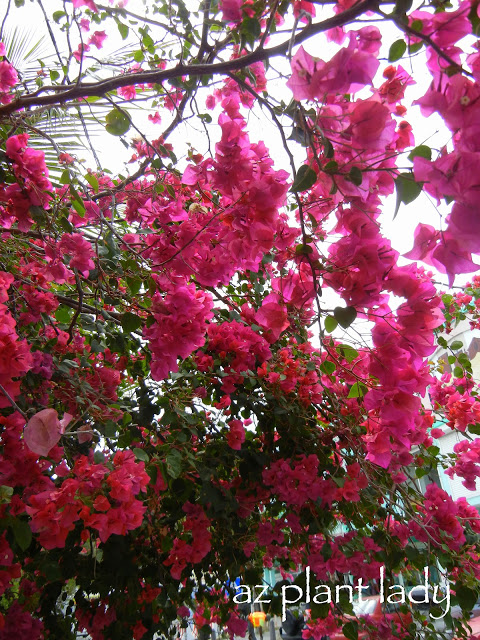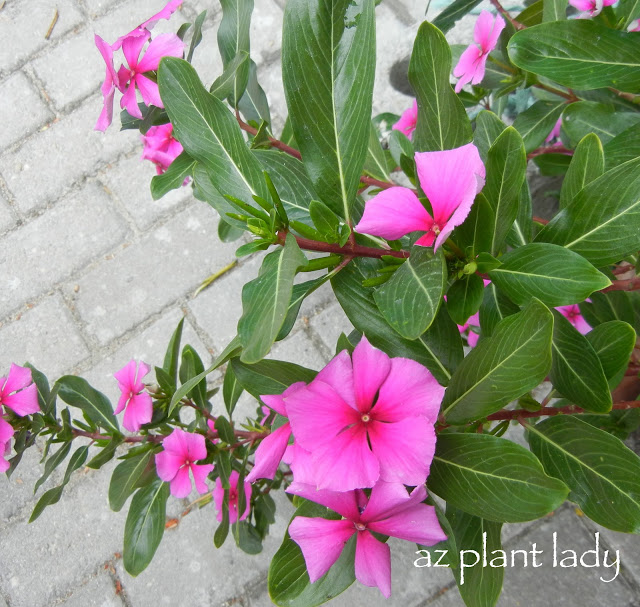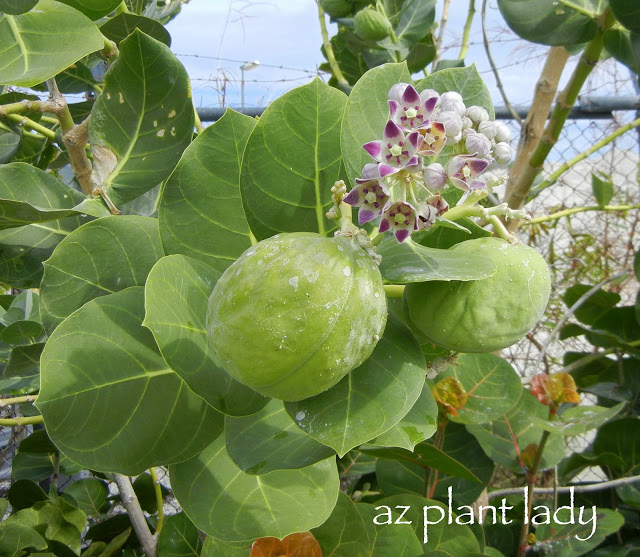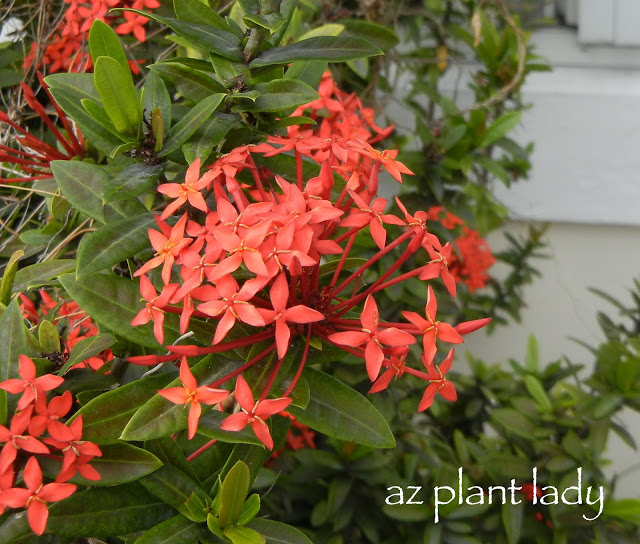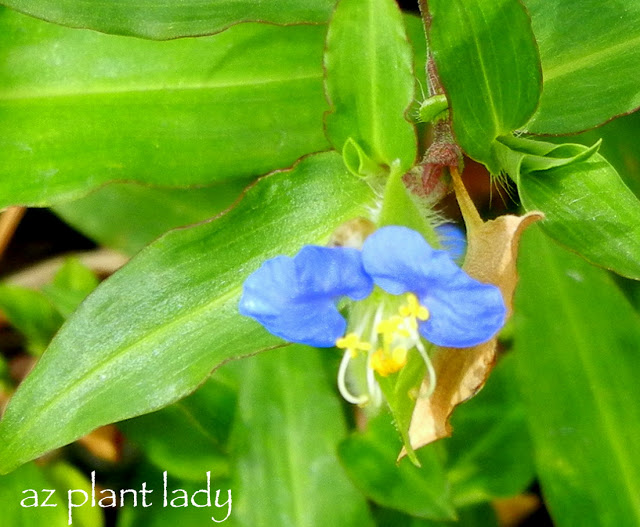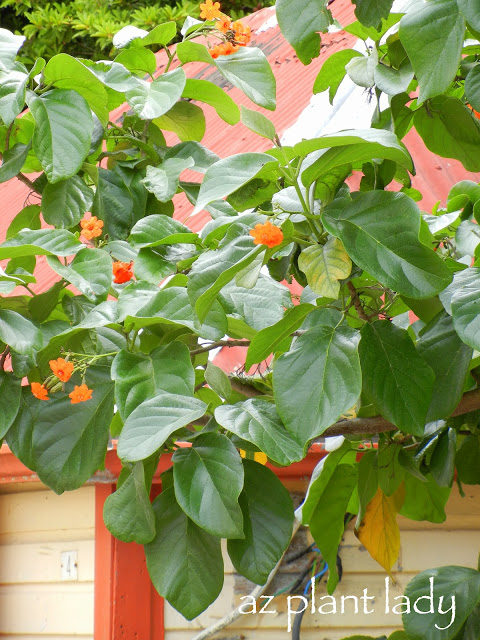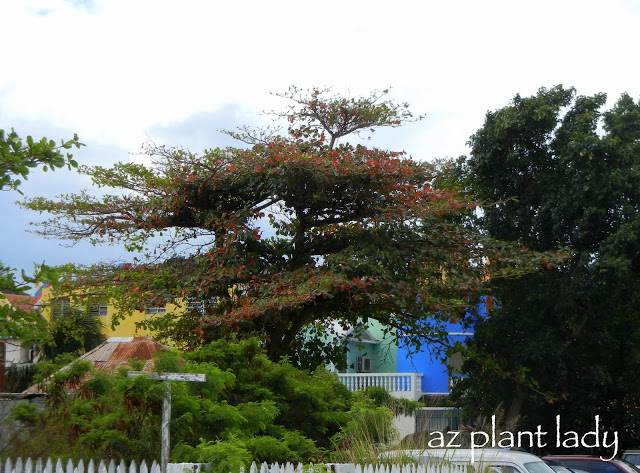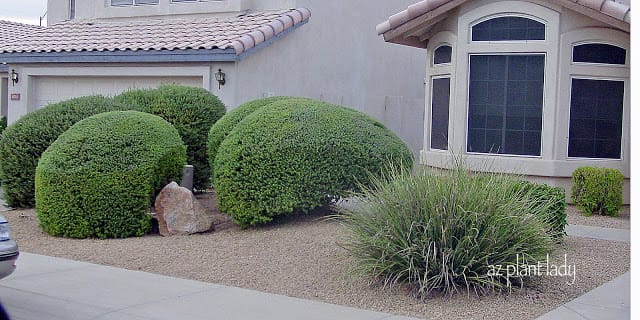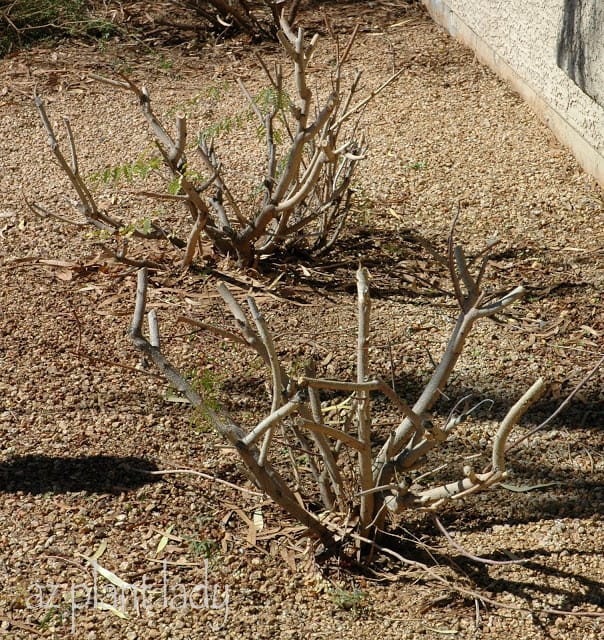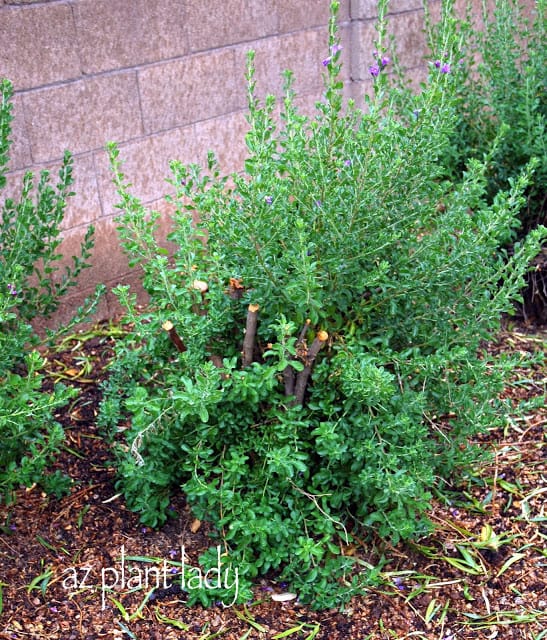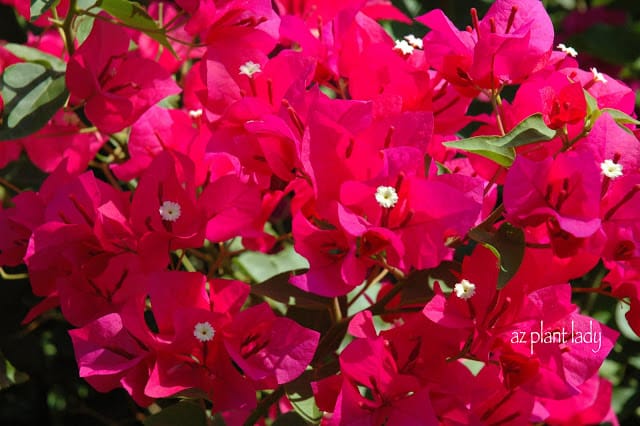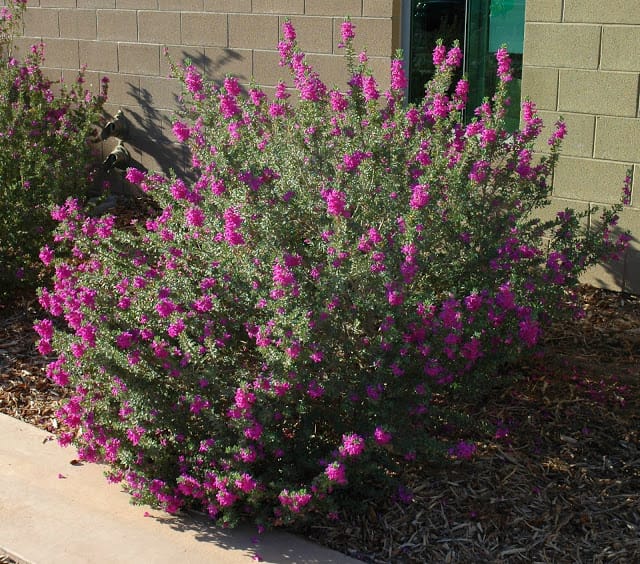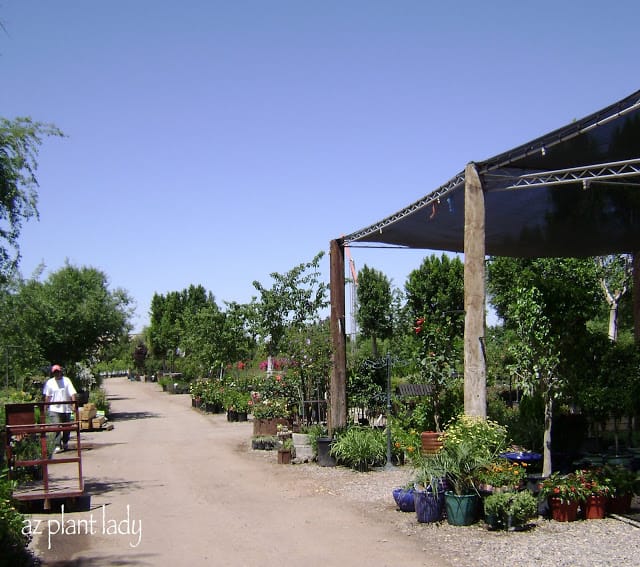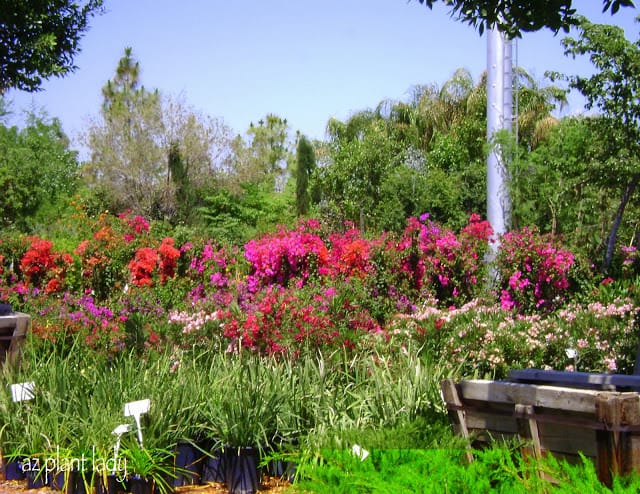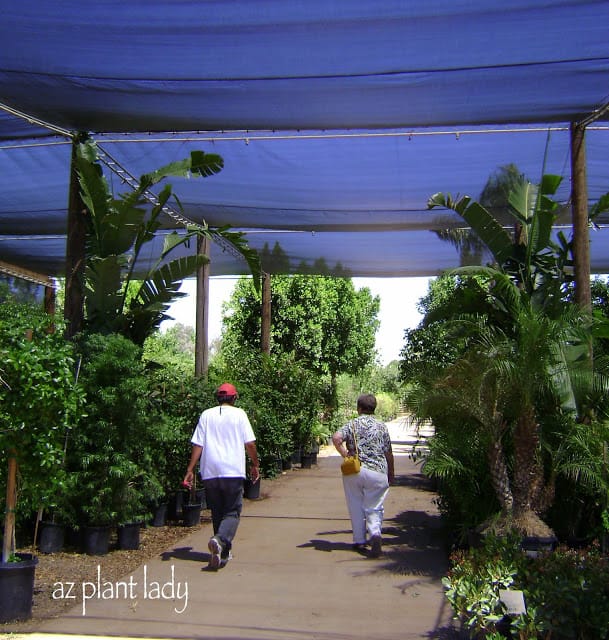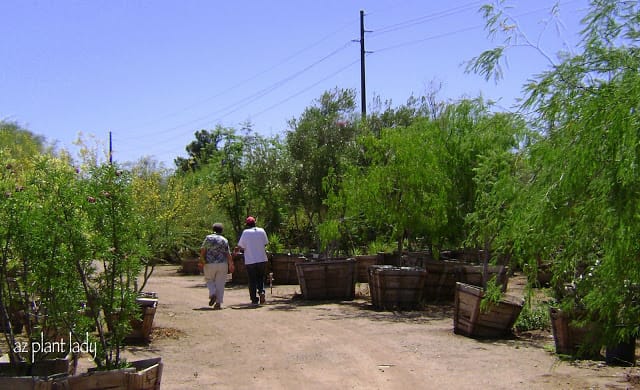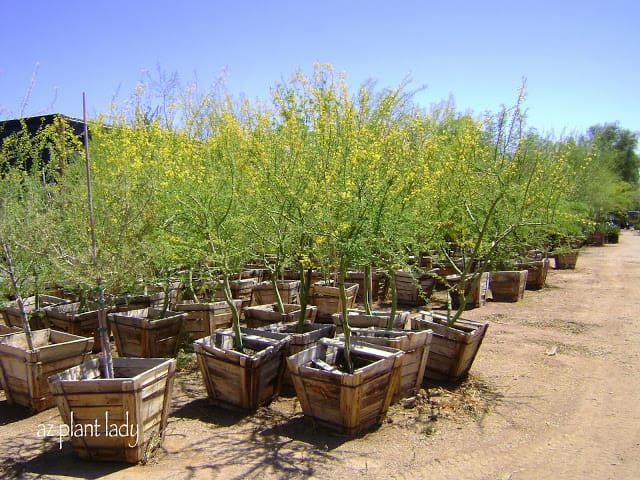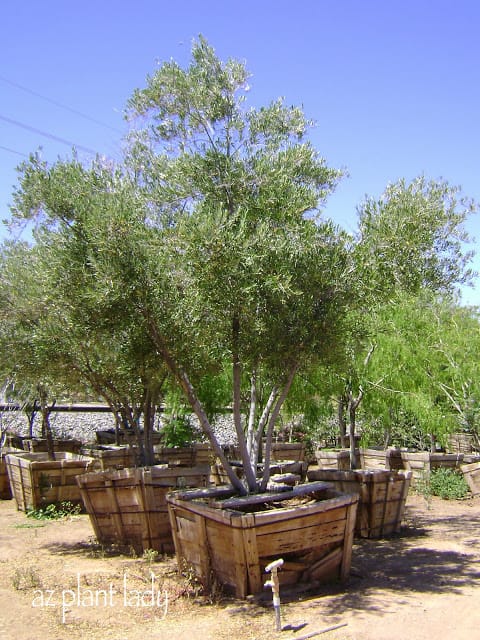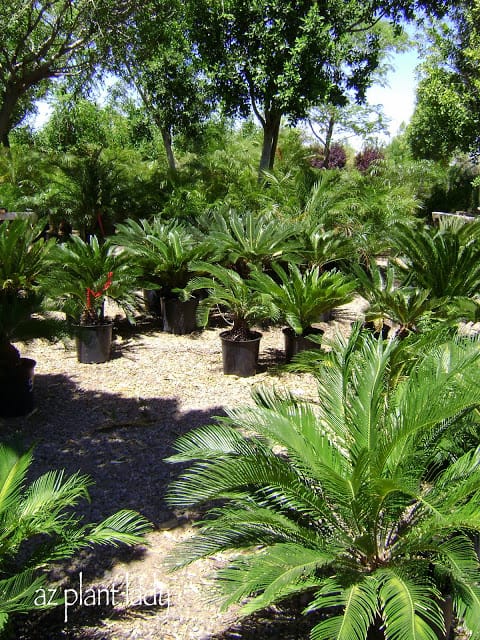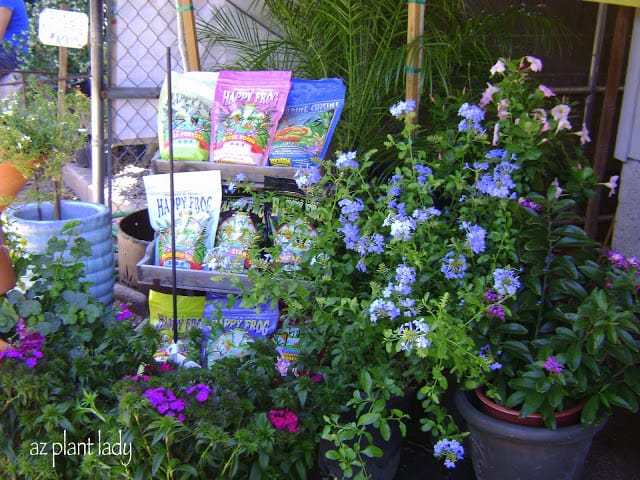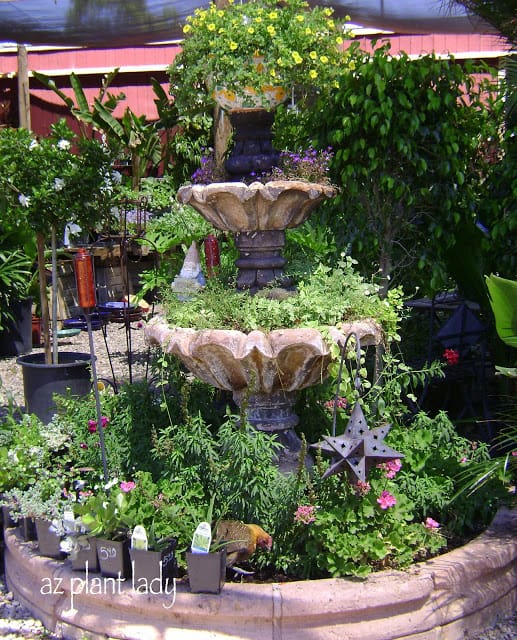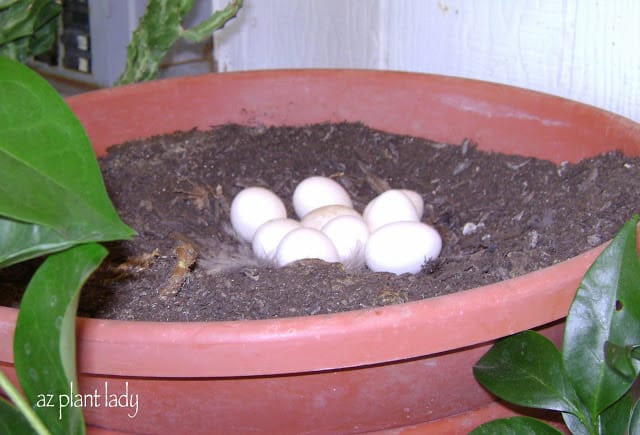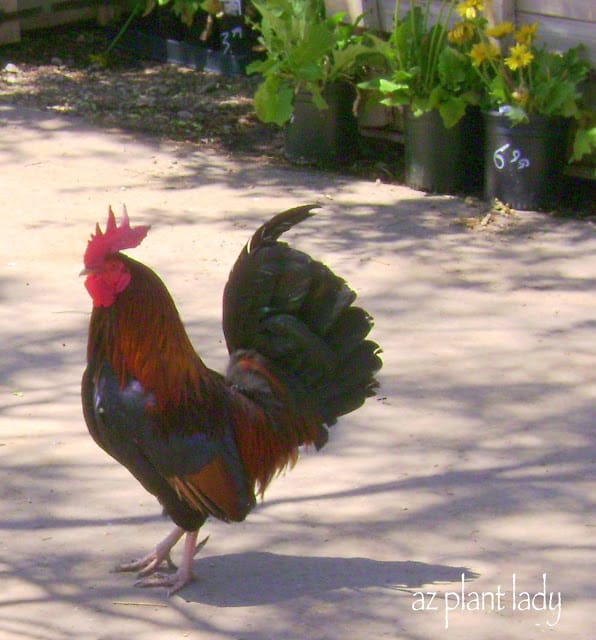When you envision a drought-tolerant landscape, does a landscape covered in colored gravel with a cactus or two come to mind?
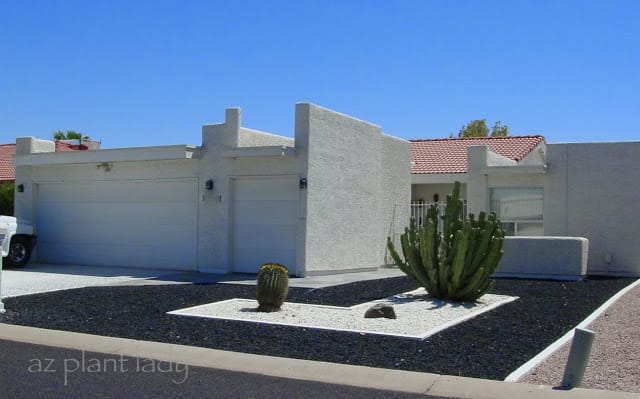
Believe it or not, this type of landscape style was popular back in the 70’s and some people have never moved beyond this outdated trend.
Well, let us fast-forward to present day when a drought-tolerant landscape can look like this…
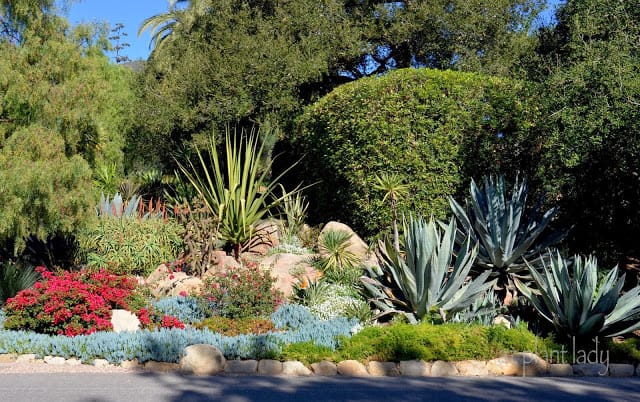
I drove by this beautiful landscape, filled with succulents and other drought-tolerant plants on a recent trip to Santa Barbara, CA.
I love the magenta-colored brachts of the Bougainvillea, the green spiky Spanish Bayonet Yucca (Yucca Aloifolia) along with the gray/blue of Century Plant (Agave americana).
The orange flowers of Aloe arborescens are also a favorite of mine. I also like how the blue/gray leaves of the ‘Blue Chalk Sticks’ variety of Ice Plant (Senecio mandraliscae) provides a cool color contrast.
You may be surprised to discover that this beautiful, drought-tolerant landscape is part of an entry to a large estate and that there is another side filled with drought-tolerant plants.
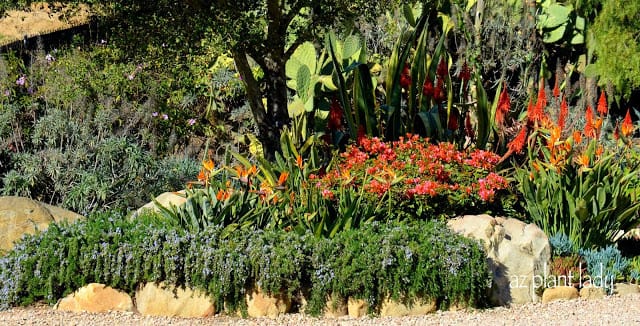
On this side, you can see Trailing Rosemary (Rosmarinus officials ‘Prostratus’) spilling over the front with Tropical Bird-of-Paradise (Strelitzia reginae) right behind.
A low-growing pink Bougainvillea shows off its bright colors along with the spiky orange flowers of the Aloe nearby.
Look closely, and you can see the paddles of a Prickly Pear cactus (not sure what species) and the variegated spikes of Agave americana ‘Variegata’.
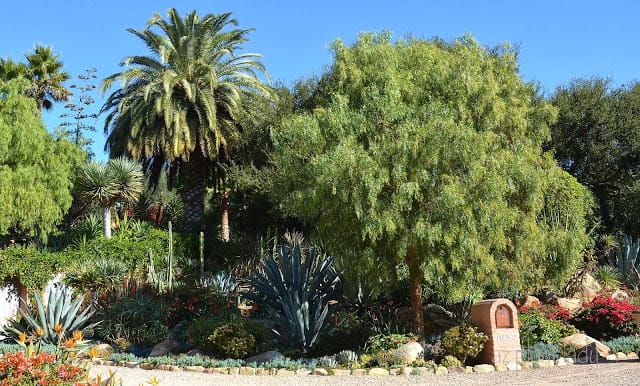
In this last view of this spectacular garden, we see a California Pepper tree (Schinus molle), which is quite familiar to Californians. (We had these trees lining our neighborhood street where I grew up in Southern California.) They are found in the low-desert areas of Arizona, but it is rare to see them.
In the background, you can see two very different types of palm trees. The large one is a Canary Island Date Palm (Phoenix canariensis) while the skinny one is a Mexican Fan Palm (Washingtonia mexicana).
If you look closely, you can see the flowering stalk of an agave as well as the upright columns of a Cereus cactus.
To the left of the mailbox, there is a Jade plant growing, a flowering Crown of Thorns (Euphorbia millii), which I also have growing in my garden.
So, if you think that having a drought-tolerant landscape means looking like this…
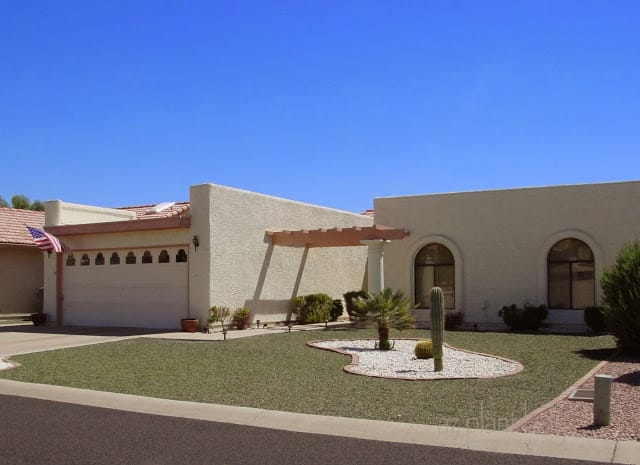
It doesn’t!
The majority of plants in the lovely garden in California, can be grown in desert climates.
So, which drought-tolerant landscape would you prefer – a colorful one or one that is boring?

